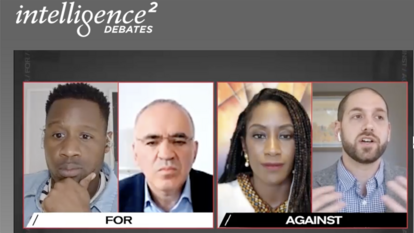At Listening Session, Wellesley Community Gives Input on College’s Demonstration Policy

Elizabeth Gildersleeve, Wellesley’s chief communications officer, led a listening session on October 31 with roughly 35 members of the campus community—including close to a dozen students—to hear ideas and concerns about the demonstration policy the College is developing. She opened by saying senior administrators were there to listen carefully and better understand the participants’ views.
The administration continues to actively seek input regarding the policy as well as issues that should be considered as it evolves. All community members are encouraged to share thoughts or questions via this Google form, which will be open until Friday, November 16.
Gildersleeve said after the session, “Today’s thoughtful discussion was an important step, and now we need to hear from as many community members as possible in order to fill in the picture.”
Activism, protest as educational tools
At the listening session, students pointed out that activism and social movements teach powerful lessons. They said the policy should actively protect and support their right to demonstrate, which enhances learning inside the classroom.
Students, faculty, and staff recognized Wellesley’s mission to educate and prepare students to make a difference in the world and noted that work towards that goal begins during a student’s time on campus. One student pointed out that when community members protest, it is not necessarily out of anger or a tendency to be disruptive; rather, it is because they care deeply about an issue. Another student said protests are not the first step towards achieving a desired result on campus: “It’s a step you escalate to after exploring other avenues, and exhausting them.”
In response to a question about whether training would help students protest more effectively, Catia Confortini, associate professor of peace and justice studies, said, “There is a distinction between activism and protest. Protest is one thing. Activism is a repertoire of tactics.” She continued, “There is a space for faculty and administrators to offer resources and tools of analysis of what kind of advocacy and tools are best at any given moment for particular political objectives.” So, she said, we can help students without giving them concrete guidelines for how to protest.
Clarity is critical
It was recognized that an interim policy developed earlier in the year was, in part, meant to protect the College from disruptive actions of outsiders. Some students, however, found the policy too ambiguous to be helpful and felt that some of the terms used in it, such as “disruption,” required further definition. They also did not understand the role of the honor code in determining disciplinary actions.
Community members said they envision a policy that clearly outlines the rights of each member of the Wellesley community to engage in demonstrations on campus and defines the protections awarded to Wellesley protesters. As one student said, “We need guidelines that help protect the rights of students to protest.”
Voiced concerns
Students and faculty also expressed concerns about how the initial interim policy was announced to students and rolled out to the community. Some said they were uncomfortable with the role the interim policy assigned to Campus Police.
The theme of distrust in general came up during the session. One student said the most important time to hear student voices is when students and the administration disagree or when students feel that their voices are not represented regarding an issue. Students want to be sure that their voices are being heard.
Students and faculty asked for time to consider some questions raised during the discussion. For example:
- How can the policy clarify roles and create a common understanding among students, faculty, and staff of expectations during a demonstration?
- How do we ensure that we protect students’ right to protest without denying other students the opportunity to learn? How do we allow both to happen?
Student involvement
Sheilah Shaw Horton, vice president and dean of students, clarified that the policy is not meant to address an existing problem on campus, but is intended to create guidelines to prevent problems in the future. Students asked to be more involved in developing those guidelines, and Horton confirmed that members of College Government would be included in the process.
Horton, along with Provost Andy Shennan and Assistant Vice President Carolyn Slaboden, both of whom also attended the session, will ultimately draft the policy, informed by the feedback heard when the interim policy was first announced, the perspectives expressed at the listening session, input received on the Google form, and ongoing conversations with members of the community. After the meeting, they confirmed that they would share a draft of the policy with the community for comment before finalizing it.



